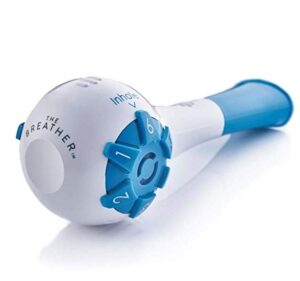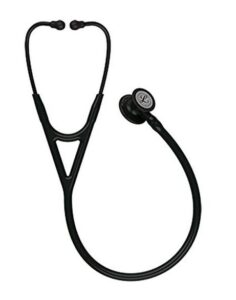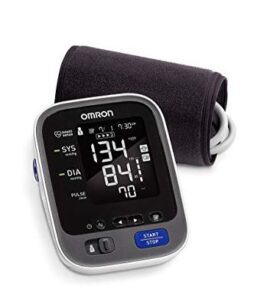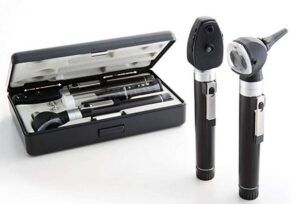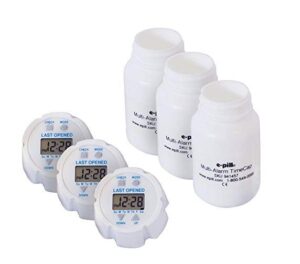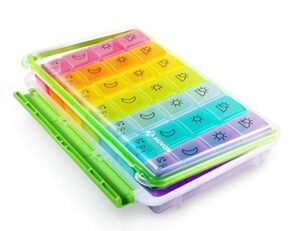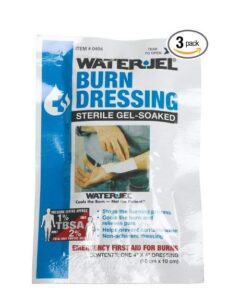
Home health care includes a wide range of clinical services that can be given in your home for an illness or injury. It is usually less expensive, more convenient, and equally effective as care you get in a hospital or skilled nursing facility. Home health care is provided by registered nurses, occupational therapists, physical therapists, or other skilled medical professionals.
Home health care is generally prescribed by a doctor. Situations in which home healthcare services are used include the following:
1. After an inpatient hospitalization, rehabilitation, or stay at a skilled nursing facility to help the patient transition back to independence.
2. When a patient needs ongoing care to deal with disabilities, chronic, and terminal illnesses.
3. After a medication change, to monitor for side effects and assure a new medication is effective.
4. When a senior suffers a noticeable decline in functioning, to help the patient regain independence through therapy or learning new skills to compensate for the deficit.
Subject to certain requirements and restrictions, home healthcare services are often covered by private and government insurance plans, such as Medicare and Medicaid.
What Services are Provided by Home Health Care?
Home health care is generally comprised of one or more of the following services.
1.Skilled Nursing:
1a. Post acute care and management of specific conditions
1b. Administration of medication and providing medication reminders
1c. Intervanous (IV) therapy, injections
1d. Performing medical tests and monitory health status
1e. Providing medication reminders>—->
1f. Pain management
1g. Caring for wounds
2. Therapy:
2a. Physical therapy
2b. Occupational therapy
2c. Speech therapy
Products and Equipment Used to Provide Home Healthcare Services?
In performing their services, home healthcare professionals make use of a wide variety of products and equipment. The nature of those products and equipment depends on the specific needs of the each patient under their care. The healthcare professional will bring with them many of the items necessary for care, but many others will be purchased by the patient. Below is a discussion of items used for providing each category of home healthcare service.
THIS PAGE IS UNDER CONSTRUCTION. PLEASE VISIT US AGAIN. IT WILL BE COMPLETED SOON.
Skilled Nursing Services
Skilled nursing services are often the main type of service provided by home health agencies. These services are provided by both registered nurses (RNs) and licensed practical nurses (LPNs). They perform a variety of tasks, including post-acute care, management of specific conditions, medication administration and management, intravenous therapy, injections, observation and assessment, medication reminders, pain management, and wound care. In all aspects of their services, they educate patients and other caregivers regarding treatments and disease management. Each of these skilled nursing services will be discussed in detail below.
Post-Acute Care and Management of Specific Conditions
Tasks Performed to Provide Skilled Nursing Services
Post-acute care (PAC)
Post-acute care (PAC) involves a range of medical care services for patients who are transitioning out of a formal medical setting but still require medical attention. PAC can be long-term or short-term, depending on the illness or injury, but either way, post-acute care focuses on recovery and rehabilitation and/or management of chronic symptoms.
Treatment plans vary from patient to patient, depending on condition and types of specialized medical attention required. Some examples where PAC is provided are listed below.
- Pulmonary rehabilitation
- Burn recovery
- Wound care
- Hip fracture or replacement therapy
- Post-stroke therapy
- Amputation care
Patients with chronic obstructive pulmonary disease (COPD) and other respiratory conditions, or those recovering from lung surgery are monitored and treated by respiratory care professionals. Treatment plans are designed to help patients 1) breathe better, 2) manage symptoms, and 3) make lifestyle choices that allow them to maintain more independence and functionality.
PAC for severe-burn patients includes 1) passive range of motion procedures, 2) patient monitoring, and 3) anti-deformity positioning help designed to promote healing and prevent complications during the recovery process.
Burn recovery often also includes occupational and physical therapists, and wound care specialists.
Ongoing, PAC involves observation, care, and assessment. The skilled nurse professional works to teach the patient about their care, so they can participate in and maximize the results of the care.
Items Used to Provide Skilled Nursing Services
Administration of Medication
Tasks Performed for Administration of Medications
Administration of medications is an important home healthcare task
Purpose
The administration of medication to a patient is often a chief responsibility of the nurse providing home health care. The practice of administering medication involves providing the patient with a substance prescribed and intended for the diagnosis, treatment, or prevention of a medical illness or condition. The five primary components of medicine administration that home healhcare professionals make sure that they are getting right (the so-called “five rights”) are as follows:
- Patient to whom the medication is being administerd
- Name (type) of medicine administered
- Dosage (amount) of the medicine administered
- Route (how given) by which medicine is administered
- Frequency (how often) the medicine is administered
Discussion
Medication administration involves actual and complete conveyance of a medication to the patient. Medication administration fall within a wider set of practices that a wider group of healthcare providers follow to achieve safe, effective patient outcomes and to prepare for and evaluate the outcome of medication administration.
Medication administration generally follows these steps:
- An order for medication, written by the physician, nurse practitioner, or physician assistants, depending on state law-dictated privileges.
- Preparation and maintenance of a record of orders for medication and other treatments — the medical chart. The components of the medical chart include:
- Patient’s name,
- Date and time when the order is written,
- Signature of the ordering clinician.
- Medicine administration instructions
Reading and Considering the Medication Order
The home healthcare provider works with the chart. They review the prescription writer’s order and consider it within the context of the individual patient. If orders are illegible, ambiguous, or confusing, the prescription-writer should be consulted to clarify the order before any medication administration occurs. Poor penmanship, misunderstanding of penmanship, and errors in transcription often contribute to medication errors.
Despite best efforts, errors can occur throughout the diagnostic, order-writing , and prescription filling process. The home healthcare provider is the last line of defense,so to speak, and should approach every patient file with a discuerning eye.
The patient should be notified of the order for the drug and provided with education about the medication they are to receive.
When considering the five rights, some factors home healthcare providers keep in mind are as follows:
|
Issue
|
Consideration
|
Due to the large number of medications available and the large body of information required for appropriate drug administration, it is important for the home healthcare professional to have access to a current medication reference such as the Physician’s Desk Reference or other reference handbooks about medication. The package insert that comes with every medication is also a good resource. Pharmacists are knowledgeable resources and can answer many questions regarding medication. It is important to be familiar with the medication ordered before attempting to administer it. Procedural manuals by the institution or medical reference publishers detail the step-by-step techniques for administering various types of medication.
Routes of Medicine Administration
The home healthcare provider should also consider the route by which the medicine is to be administered. Any routes involving injection or insertion of objects into the body require asepsis, the practice of maintaining a state free from disease-causing micro-organisms. All medications should be handled properly to ensure that they do not come into contact with potentially contaminated objects or surfaces.
The following table shows the most common routes of medical administration.
|
Route
|
Explanation
|
Frequency of Administration
Frequency of administration is most often ordered on a repeating schedule (ie, every eight hours). At times the order may be written as a STAT (give right away) order, a one-time order (give just once) or a prn (give as needed) order. Standing orders are routine hospital orders that doctors in specialized areas prescribe on admission.
Many abbreviations are used in writing medication orders. The Glossary to the fho50.com website has a table of many common medical order abbreviations.
Some examples of medication orders using abbreviations are:
digoxin 0.25 mg p.o. q.d.
diphenhydramine 25 mg p.o. q h.s. prn.
Dosage
The home healthcare professional also makes sure the proper dosage is administered. At times, calculations may need to be performed to ascertain the correct dose. For example, a scored tablet, or one that is designed and intended for dividing, may need to be halved or quartered in order to administer the correct oral dose. This requires simple division.
Common situations requiring calculation include calculation of intravenous infusion rates and the conversion of measurement units, for example, determining how many milliliters (mL) are required to give the ordered number of milligrams (mg).
The formula for this calculation can be applied to many situations:
Dose ordered/Dose on hand x Amount on hand = Amount to administer
Using the above medication question, 25 mg /100 mg x 2 ml/mg = 0.5 ml (amount to administer)
Intravenous medications also require frequent calculation. For example, an intravenous anticoagulant such as heparin may be ordered as “1000 units per hour,” and the home healthcare provider may need to calculate how many drops are needed per minute or hour based on how the intravenous solution is prepared. These calculations may vary according to the infusion equipment used, for example, varying drop factor ratings or use of a device called a buretrol (shown below) that carefully measures infused medication.

Often an infusion pump is used to control delivery of fluids into a pattient’s body intravenously.
Medications of any sort should not be left unattended, and patients should be observed taking the medication. This avoids the disposal, hoarding, abuse, or misuse of the medication, and assures the safety of the patient.
The home healthcare professions should observe and monitor the patient’s response to medication, and report potential adverse effects observed and concerns expressed by the patient or other clinicians to the prescription writer. The patient should be monitored to make sure the medication has had the desired effect.
Documenting the Patient’s Medical Chart
Documentation of medication administration is an important responsibility of the home healthcare provider. The patient’s chart should contain a complete medication record which tells the story of what substances the patient has received, how much, through what route, and when. Like other health care records, it is also a legal document. The initials of the administering nurse or other health care provider and the time and date should be documented on the record next to the appropriate order.
Other information may be required, such as location and severity of pain when administering a pain medicine (analgesic) or pulse rate when administering certain heart medications (i.e., digoxin). Patient refusals of medication also need to be documented, and the prescribing clinician should be informed.
Medication errors need to be documented as well. The prescribing clinician should be notified of errors. Institutional policies usually require filing a separate form to document errors. Errors can include administering the wrong drug, wrong dose, at the wrong time, or via the wrong route. Omissions of medication are also considered errors.
Good Practices for Patients to Follow
- Learn about your medicines. Read medicine labels and package inserts and follow the directions. If you have questions, ask your doctor or other health care professionals.
- Talk to your team of health care professionals about your medical conditions, health concerns, and all the medicines you take (prescription and over-the-counter medicines), as well as dietary supplements, vitamins, and herbals. The more they know, the more they can help. Don’t be afraid to ask questions.
- Keep track of side effects or possible drug interactions and let your doctor know right away about any unexpected symptoms or changes in the way you feel.
- Make sure to go to all doctor appointments and to any appointments for monitoring tests done by your doctor or at a laboratory.
- Use a calendar, pillbox, or other things to help you remember what you need to take and when. Write down information your doctor gives you about your medicines or your health condition.
- Take along a friend or relative to your doctor’s appointments if you think you might need help to understand or to remember what the doctor tells you.
- Have a “Medicine Check-Up” at least once a year. Go through your medicine cabinet to get rid of old or expired medicines and also ask your doctor or pharmacist to go over all the medicines you now take.
- Don’t forget to tell them about all the over-the-counter medicines or any vitamins, dietary supplements, and herbals you take.
- Keep all medicines out of the sight and reach of children.
Source: Center for Drug Evaluation and Research, Food and Drug Administration, U.S. Department of Health and Human Services
IV Therapy and Injections
Tasks Performed to Provide Intravenous Therapy and Injections
Home healthcare professionals provide intravenous (IV) therapy and injections, and nutrition therapy.
Devices Used to Provide IV Therapy and Injections
- Diabetic storage accessories
- Glucose control solution
- Glucose meters
- Glucose/urinalysis test strips
- Insulin syringes
- Lancets and devices
- Sharps containers/needle disposal
- Skin care products
Performing Medical Tests and Monitoring Health Status
Tasks Performed for Medical Tests and Monitoring Health
Performing medical tests and monitoring health status are important home healthcare tasks.
Home health care helps to monitor patients health and allow for adjustment to treatment when warrented.
Items Used to Perform Medical Tests and Monitor Health
Stethoscope (for listening to heart, lungs and intestines. and sometimes to take measurements of blood pressure)
Blood pressure cuffs
Ophthalmoscopes (for looking into eyes)
Octoscopes (auriscope) (for looking into ears)
Providing Medicine Reminders
Tasks Performed to Provide Medicine Reminders
Providing medicine reminders is an important home healthcare task.
Remembering to take medications at one or more specific times can be challenging for many seniors. Home healthcare professionals can help the patient to remember when to take medication.
Home care helps seniors to follow the medicine plans prescribed by their doctors.
Items used to Provide Medicine Reminders
- Pill organizers and dispensers:
- Multi-day pill organizers
- Automatic pill dispensers
- Medication timers and reminders:
- Pill bottle timer caps
- Pill reminders
Pain Management
Tasks Performed to Provide Pain Management
Pain management is an important home healthcare service.
For temporary pain relief, common products such as gels, lotions, and ointments are used.
For rehabilitation, various therapies are employed.
Alternating hot and cold at the same time may be used to treat sprains and strains. A wide variety of products and devices can be used for the therapy.
A type of machine called a transcutaneous electrical nerve stimulation (TENS) unit may be used for treating cases of chronic back pain, lower back pain, shoulder pain, neck pain, post operative pain and more.
Transcutaneous electrical nerve stimulation (TENS) therapy uses low-voltage electric currents to treat pain. Electrodes or mediums are placed on the body at the site of pain. The TENS unit delivers electricity that travels through the electrodes to the nerve fibers. The electric current block the pain receptors from being sent from the nerves to the brain.
For at home usage, the senior will receive a small, battery operated TENS machine. The home healthcare professional adjusts the machine to the correct settings. The provider shows the patient how to use the machine.
TENS therapy can be used to treat both chronic (long lasting) and acute (short-term) pain. The most common conditions that TENS therapy is used to treat in seniors are:
- Osteoporosis-related joint, bone, or muscle problems
- Fibromyalgia-related joint, bone, or muscle problems
- Tendinitis (muscle tissue inflammation)
- Bursitis (inflammation of the fluid-filled pads that cushion the joints)
- Neck pain
- Cancer pain<
Electrical muscle stimulation (EMS), also known as neuromuscular electrical stimulation (NMES) or electromyostimulation, is the elicitation of muscle contraction using electric impulses. EMS is used for several purposes:
- As a strength training tool for healthy subjects and athletes
- As a rehabilitation and preventive tool for partially or totally immobilized patients
- As a testing tool for evaluating the neural and/or muscular function in vivo
- As a post-exercise recovery tool.
The impulses are generated by a device and are delivered through electrodes on the skin near to the muscles being stimulated. The electrodes are generally pads that adhere to the skin. The impulses mimic the action potential that comes from the central nervous system, causing the muscles to contract.
Galvanic stimulation is a form of electrotherapy which involves the use of direct current applied to specific areas of the body. It can be performed at home, with the assistance of a home unit prescribed by a doctor. There are some precautions involved with the procedure which make it important to ensure it is performed or supervised by someone who is knowledgeable to avoid causing injury to the patient.
Stimulating the body with direct current appears to alter blood flow, which can influence wound healing time. In addition, it can stimulate the muscles and nerves, many of which are equipped to handle electrical impulses. Thus, galvanic stimulation has a number of potential applications.
In pain relief, applying current can reduce pain and help people manage pain. The amount of current varies, but is generally enough to create only a low-level tingling sensation in the patient. The signals from galvanic stimulation appear to override the pain signals sent by the body, allowing the patient to experience less pain. This technique can be used to manage pain in a variety of settings, and may be combined with other pain management techniques for greater effectiveness.
Intensity units
Interferntial stimulation units
Iontophores is a process of transdermal drug delivery by use of a voltage gradient on the skin. Molecules are transported across the stratum corneum by electrophoresis and electroosmosis and the electric field can also increase the permeability of the skin.These phenomena, directly and indirectly, constitute active transport of matter due to an applied electric current. The transport is measured in units of chemical flux.
Home health care helps seniors to live with less pain.
Devices and Services Employed to Provide Pain Management Services
- Hot and cold therapy
- Aqua relief therapy
- Hot/cold pillow pads
- Water therapy hand mittens
- Cervical therapy bladders
- Reusable and disposable ice packets
- Heat lotion packs
- Bottles for heat therapy
- Hydrocollator and accessorities
- Paraffin bath and wax
- Infrared units
- Kinesiology tape
- TENS/EMS/Electrotherapy
- TENS (Transcutaneous electrical nerve stimulation) units
- EMS (Electronic muscle stimulation) units
- Galvanic stimulation units
- Intensity units
- Interferntial stimulation units
- Iontophoresis
- Laser and light therapy
- Conductive garments
- ElEctrodes
- Ultrasound units
- Pain relief gels, lotions and ointments
- Rehab and exercise equipment
Caring For Wounds
Tasks Performed to Care for Wounds
Wound care for pressure sores or a surgical wound is a home healthcare service.
Wound care is specialized treatment to promote the healing or management of a range of chronic and acute wounds, including post-operative wounds, diabetic ulcers, pressure wounds, and vascular ulcers. Wound care often includes nutritional therapy to promote healing.
Wound care supplies are important to keep around to properly care for open wounds, skin cuts, skin abrasions and others. They are crucial to promote a prompt healing. When not treated properly or in time, an open wound runs the risk of infections. Even post surgical wounds need these type of supplies at some point . As the largest organ of the human body, the skin is responsible of regulating the temperature, enhancing sensations, produce vitamins and more so it needs a lot of care.
Always be prepared with all the wound care products you must have to provide an efficient first aid response on a sudden open wound as well as for continuous wound care.
Home health care helps seniors to recover from wounds and reduces the chance of infections.
Devices and Services Used to Care for Wounds
- Band-aids
- Bandages
- Burn care
- Cotton-tipped applicators
- Gauze
- Dressings
- Sponges
- Tape
- Wound cleaner and debridement
- Tracheostomy
- Wound drainage
Physical Therapy
Tasks Performed to Provide Physical Therapy
Physical therapy is provided by qualified physical therapists (PTs), or by physical therapist assistants (PTAs) working under the supervision of a physical therapist. These physical therapy professionals are trained in body mechanics and in how various body systems are affected by motion, positioning, and exercise. To ease or increase body movement, they focus on improving strength, balance, and range of motion, often targeting the spine and lower body extremities.
Physical therapists diagnose and treat patients recovering from injuries and specifically work on a patient’s gross motor functions. PTs focus on evaluate the patient’s injured tissues and structures, and may use massage therapy, exercise, or acupuncture to treat those injuries. PTs develop a treatment plan to promote the ability to move, reduce pain, restore function, and prevent disability.
In carrying out the treatment plan, PTs can help patients avoid surgery or provide enough relief to get people off of pain medications. Also, they can help patients to the loss of mobility before it occurs by developing programs within the plan that are oriented towards fitness and wellness.
Physical therapists are often involved in providing post-acute care therapy. Some examples include the following.
- Post-stroke recovery – Daily individualized therapy sessions help patients regain lost abilities and skills following a stroke. Physical therapists, occupational therapists, and speech therapists work as part of a cross-functional team with doctors to restore patient functioning and quality of life.
- Hip fracture or replacement – Patients who suffer from a fall or who undergo a hip replacement often receive physical and occupational therapy to help restore their strength, balance, and coordination, and to learn skills and techniques that will aid in fall prevention and provide a safe return to independent living.
- Amputation care – Following the loss of a limb, amputation care includes wound care, physical therapy to promote muscle strength and endurance, and occupational therapy to assist with adaptations in the tasks of daily living.
Items Used byto Provide Physical Therapy
- Physical therapy
- Exercise equipment
- NordicTrack ProSkier
- Exercise bikes
- Ankle-leg exercisers
- Hand exercisers
- Range of motion exercisers
- Exercise balls
- Exercise mats
- Exercise weights
- Wheelchair exercise machines
- Fitness Devices
- Activity trackers
- Heart rate monitors
- Exercise bars
- Equipment storage
- Pedometers
- Fitness scales
- Treatment tables
- Ultrasound units
- Isokinetics
- Electrical muscle stimulation
- Exercise equipment
Occupational Therapy
Tasks Performed to Provide Occupational Therapy
Occupational therapists focus primarily on strengthening the upper body and helping patients learn to safely complete tasks of daily living, such as showering, eating and dressing.
Occupational therapists (sometimes called OTs) work with people of all ages to overcome physical obstacles or ailments and to help them get back to fully engaging in their daily lives. This can be anything from conducting an in-home assessment to create a safe living environment, to helping them with everyday tasks such as getting dressed, moving around the house, cooking, eating, gardening, doing school work, using a computer, and driving.
An occupational therapist will typically do the following:
- Observe patients doing tasks, ask the patient questions, and review the patient’s medical history
- Use the observations, answers, and medical history to evaluate the patient’s condition and needs
- Establish a treatment plan for patients, laying out the types of activities and specific goals to be accomplished
- Help people with various disabilities with different tasks, such as helping an older person with poor memory use a computer
- Demonstrate exercises that can help relieve pain for people with chronic conditions, such as joint stretches for arthritis sufferers
- Evaluate a patient’s home and identify how it can be better suited to the patient’s health needs
- Educate a patient’s family and employer about how to accommodate and care for the patient
- Recommend special equipment, such as wheelchairs and eating aids, and instruct patients how to use that equipment
- Assess and record patients’ activities and progress for evaluating clients, for billing, and for reporting to physicians and other healthcare providers
Patients with permanent disabilities often need help performing daily tasks. Occupational therapists show patients how to use appropriate adaptive equipment, such as leg or knee braces, wheelchairs, and eating aids. Patients can function independently and control their living environment by using these devices.
When working with seniors, OTs help their patients lead more independent and active lives. They assess the patient’s abilities and environment and make recommendations, such as using adaptive equipment or identifying and removing potential fall hazards in the home.
For seniors with mental health challenges, such as developmental disabilities, mental illness, or emotional problems, OTS help theme to cope with and engage in daily life by teaching skills such as time management, budgeting, using public transportation, and doing household chores. Additionally, therapists may work with individuals who have problems with drug abuse, alcoholism, depression, or suffer from other disorders.
Some occupational therapists, such as those employed in hospitals or physicians’ offices, work as part of a healthcare team, along with doctors, registered nurses, and other types of therapists. They also may oversee the work of occupational therapy assistants and aides.
Occupational therapists have distinct personalities. They tend to be social individuals, which means they’re kind, generous, cooperative, patient, caring, helpful, empathetic, tactful, and friendly. They excel at socializing, helping others, and teaching. Some of them are also investigative, meaning they’re intellectual, introspective, and inquisitive.
Occupational therapy focuses on evaluating and improving a person’s functional ability, and on how the patient uses fine motor and cognitive skills to perform tasks that are meaningful to them. Simply put, occupational therapists help their patients perform day-to-day tasks. Patients recovering from injuries or have developmental or cognitive disabilities affecting their motor skills, emotions or behavior are not directly treated for their injury by the occupational therapist, but are helped with their independence, the improvement of their life skills, and assisted with their ability to accomplish daily activities following their injury. Some occupational therapy may happen in a hospital or in the occupational therapist’s office, however a big chunk of the therapy will be done in the patient’s home environment. The reason for this is that occupational therapy puts a strong emphasis on the practical aspects of helping individuals do the things they need to do in order to live their life to the fullest.
In some cases, patients may begin treatment by seeing a physical therapist first, and then move on to seeing an occupational therapist. For example, a patient might see a physical therapist after having a stroke in order to build back muscle strength. However, once the muscles have strengthened, that patient may see an occupational therapist to help with taking a bath or shower, eating, buttoning a shirt, or using the restroom.
- Occupational therapy
- Strengthening upper body
- helping patients learn to safely complete activities of daily living
Home health care helps seniors to gain strength and better use their weakened or injured portions of their bodies.
Items Used to Provide Occupational Therapy
Speech Therapy
Tasks Performed to Provide Speech Therapy
Speech therapists help patients regain abilities following a stroke and also help patients who have difficulties swallowing as a result of a medical event.
Home health care helps seniors to gain strength and better use their voices and throats.
Items Used to Provide Speech Therapy
- Adaptive communication switches:
- Infrared switches
- Jellybean switches
- Sound switches
- Touch switches
- Sound measuring apparatus / decibel meters:
- Electroglottograph(EGG)
- Larygograph
- Stroboscopes:
- Diagnostic stroboscopes
- Video stroboscopes
- Tablet computer:
- IPad
- Google Nexus
- Samsung Galaxy
- Voice Synthesizer:
- Augmentative communication device (AAC)
- Therapeutice voice synthesizers
- Analytical software
- Language analysis software
- Signal analysis software
- Speech analysis software
- Medical software
- Aphasia treatment
- Multi-speech – KeyPENTAX
- Speech training system – video voice
- Text to speech – UniversalReader by Premiere Assistive Technology
- Office software
- Email application
- Word processing
- Spreadsheet

